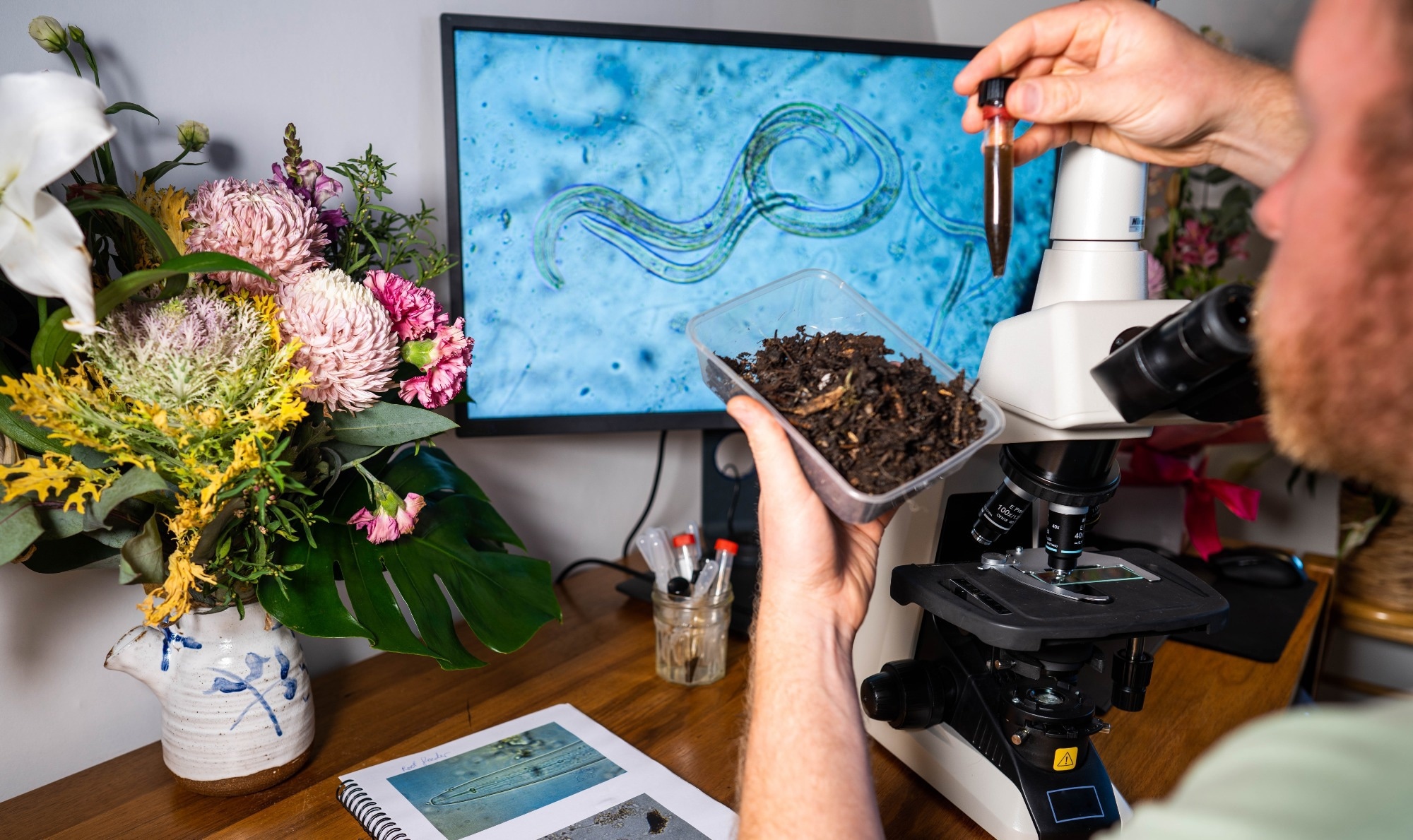In an article published in the journal Scientific Reports, researchers developed a novel machine-learning model to predict the presence of a highly contagious and potentially fatal bacterial pathogen called Francisella tularensis (Ft) that causes tularemia in soil samples. Their technique uses a hyperparameter optimization technique and a two-stage feature ranking process to achieve high accuracy and robustness.
 Study: Machine Learning Unveils Tularemia Pathogen Presence in Soil. Image credit: William Edge/Shutterstock
Study: Machine Learning Unveils Tularemia Pathogen Presence in Soil. Image credit: William Edge/Shutterstock
Background
Ft is a potential bioweapon that can cause severe illness and death in humans and animals. It is classified as a Category A biological agent by the Centers for Disease Control and Prevention (CDC) because it poses a high risk to public health and national security due to its high morbidity and mortality rates. The bacterium can survive for long periods in various environments, such as soil, water, and decaying animal carcasses. The transmission of Ft can occur through various routes, such as inhalation, ingestion, or contact with infected animals or vectors. Therefore, identifying Ft in the soil is a critical task in controlling disease outbreaks and preventing bioterrorism.
However, traditional methods for detecting Ft in soil, such as mass spectrometry, polymerase chain reaction, and enzyme-linked immunosorbent assay, are costly, time-consuming, and require specialized equipment and expertise. Moreover, these methods do not account for the complex interactions between the bacterium and the soil physicochemical characteristics, which may influence its persistence and distribution. Machine learning models can be used to categorize soil samples based on their features and identify the key factors affecting the presence of Ft. However, it requires a careful selection of features and parameters to achieve optimal performance and avoid overfitting or underfitting.
About the Research
In the present paper, the authors proposed a machine learning algorithm for effectively identifying the presence of Ft and classifying soil samples as positive or negative for Ft based on their physicochemical characteristics. They collected 148 soil samples from different locations in the Punjab province of Pakistan, where Ft is endemic, and analyzed them for 21 soil features, such as the potential of hydrogen (pH), clay, moisture, nitrogen, organic matter, and various metals. Moreover, they tested the samples for Ft using a real-time polymerase chain reaction (PCR) protocol targeting the tul4 gene.
The researchers applied four feature-ranking methods, namely ReliefF (RLF), support vector machine (SVM) attribute evaluator, Gini-Index (GI), and chi-square (Ch-Sq), to rank the soil features according to their importance for Ft classification. They used a two-stage feature-ranking process, where they calculated the weighted score of each feature based on the rankings from different methods. Additionally, they utilized three machine learning classifiers, namely SVM, neural networks (NN), and ensemble models (EM), to differentiate the soil samples. Two hyperparameter optimization techniques, namely Random and Bayesian Search were also used to find the best settings for each classifier.
Moreover, the research evaluated the performance of feature-ranking methods and all the classifiers using 10-fold cross-validation and accuracy metrics. The results were also compared with previous studies that used machine-learning models for soil-borne pathogens.
Research Findings
The outcomes showed that the newly designed two-stage feature-ranking process effectively identified clay, nitrogen, soluble salts, silt, organic matter, and zinc as the most significant soil features for Ft classification. These features are consistent with past studies that reported the role of these factors in soil pathogen persistence. The study also found that the Bayesian optimization technique yielded better results than the Random Search technique for all classifiers.
Among all the classifiers, SVM achieved the highest accuracy of 86.5% for both Bayesian and Random Search optimizations, followed by NN with 83.8% and 83.1%, respectively, and EM with 81.8% and 81.1%, respectively. The authors highlighted that their approach surpassed previous methods which used machine learning models for soil-borne pathogens, such as Coxiella burnetii and Fusarium wilt. Their model achieved higher accuracy and used fewer features than the previous models.
The proposed machine learning model has several potential applications for detecting and controlling Ft and other soil-borne pathogens. The model can be used as a rapid and cost-effective screening tool to identify high-risk areas and prioritize samples for further testing. The model can also be used to monitor the environmental factors that influence the persistence and spread of the bacterium and design effective intervention strategies. Moreover, the model can be adapted and generalized to other regions and pathogens as long as sufficient data on soil attributes and pathogen presence are available.
Conclusion
In summary, the presented machine learning technique is effective and efficient for predicting Ft pathogens in the soil. The authors used several classification methods to identify whether the soil contains pathogens or not. They applied a feature ranking process to show the relevant soil attributes. Moreover, they employed several hyperparameter optimization methods to enhance the accuracy of soil classification.
The researchers acknowledged limitations and challenges, such as the need for more data, the variability of soil characteristics, and the complexity of pathogen-environment interactions. They suggested that future research should focus on improving the data quality and quantity, incorporating more features and pathogens, and exploring more advanced machine learning methods. Moreover, they recommended that future studies should validate the model on independent datasets and compare it with other existing methods.